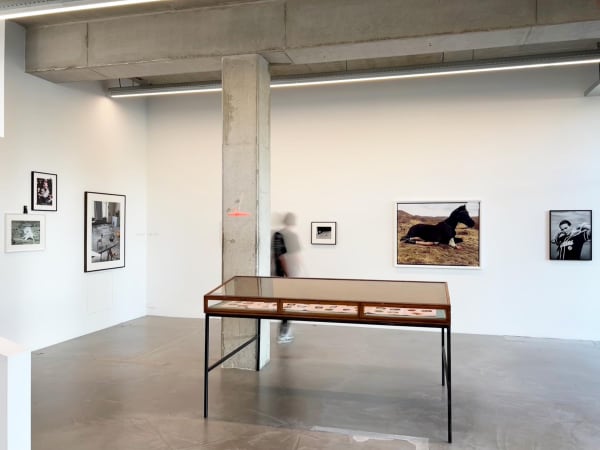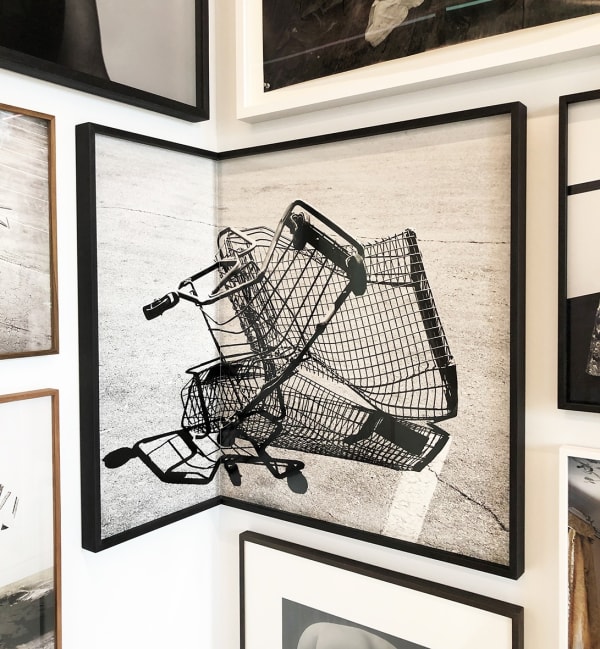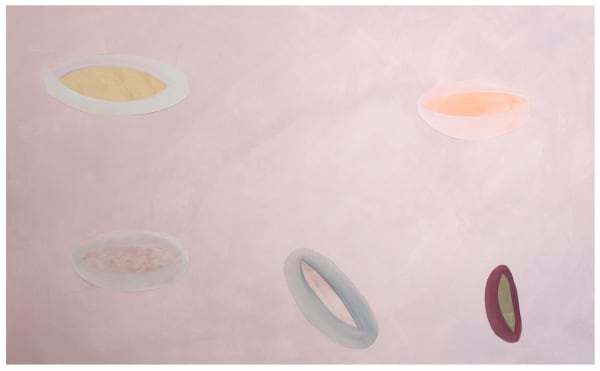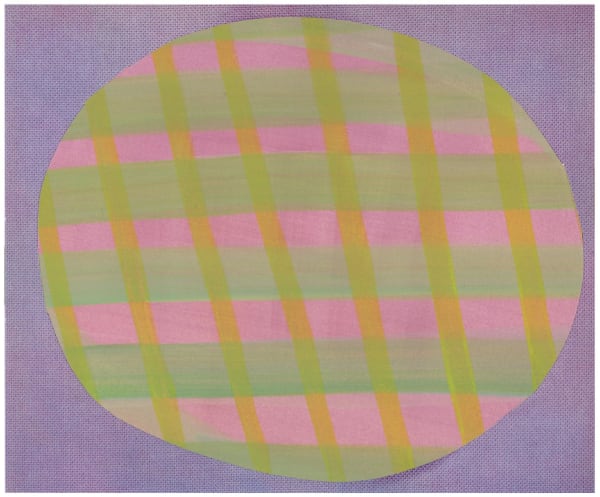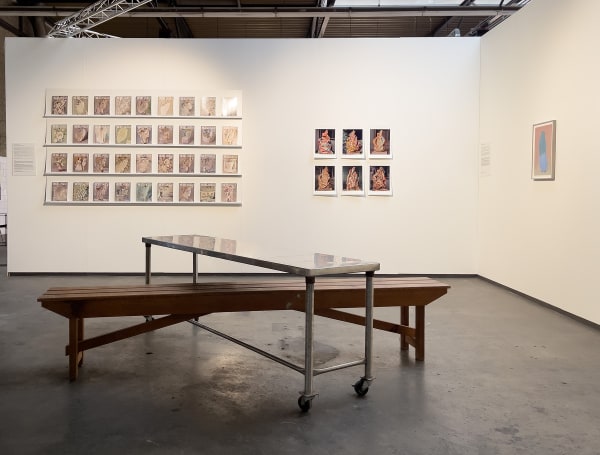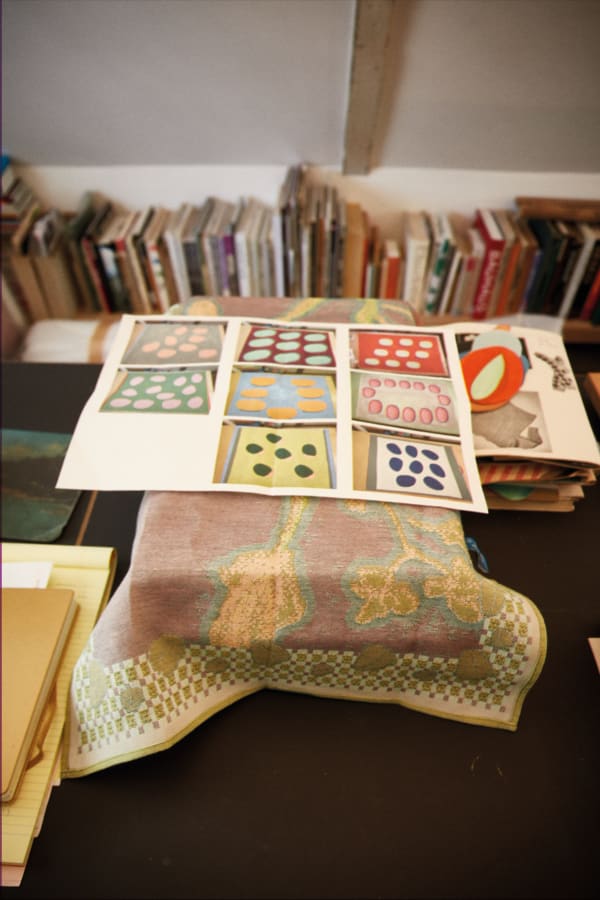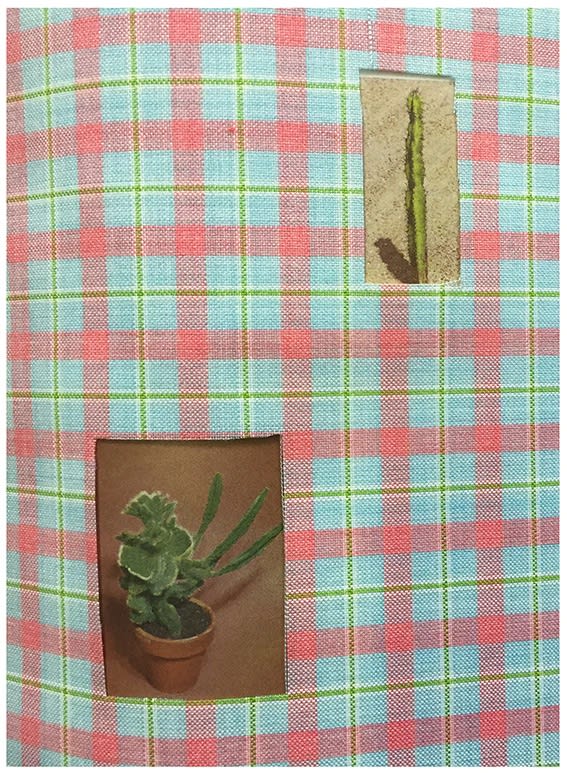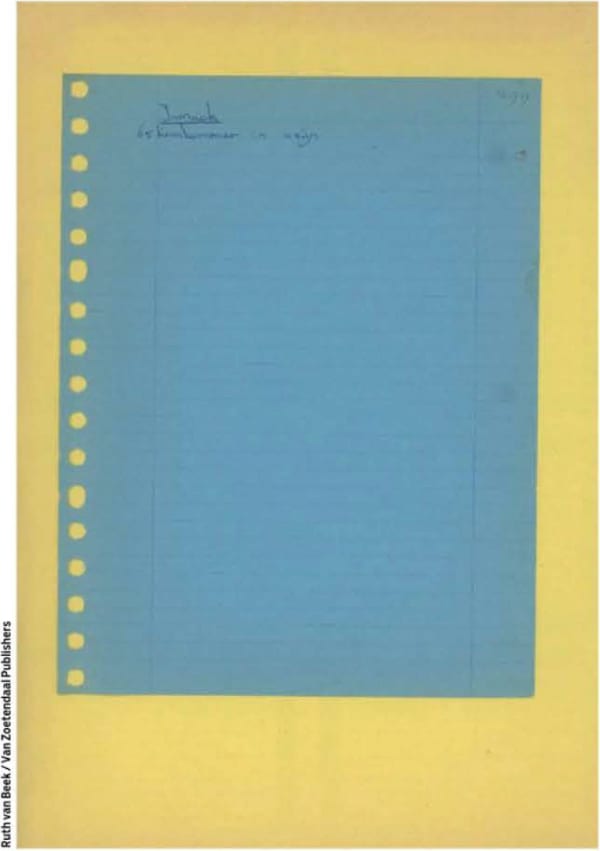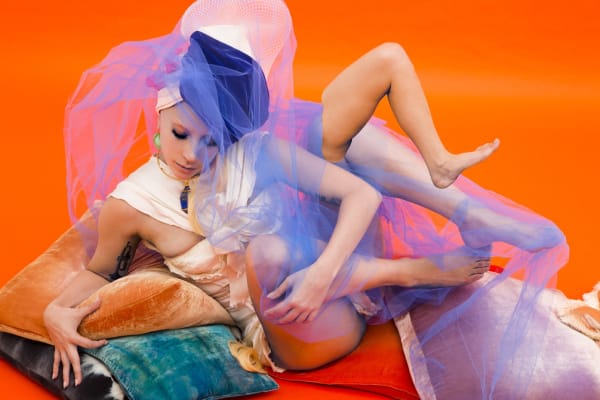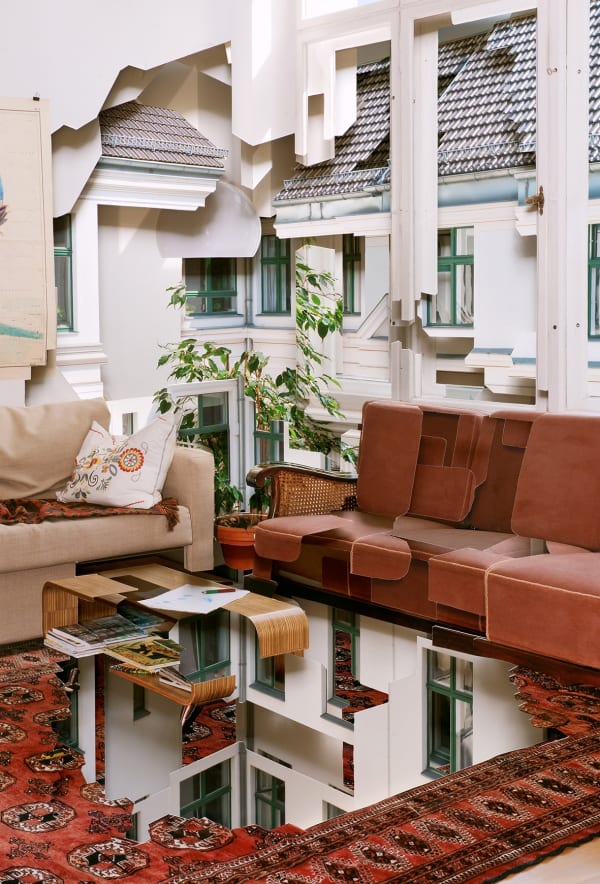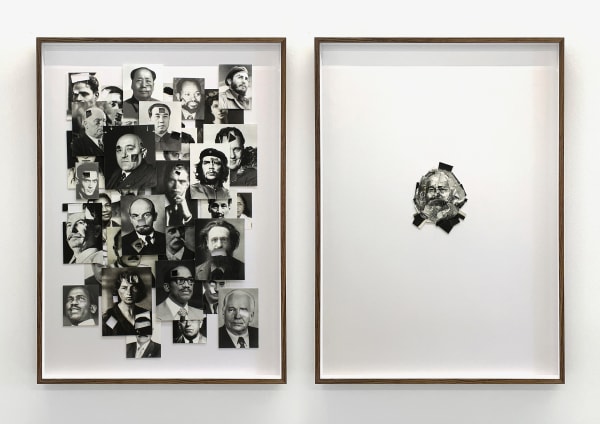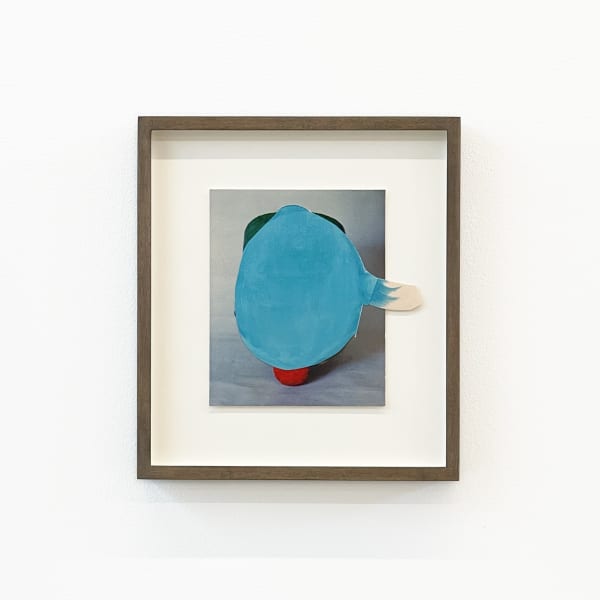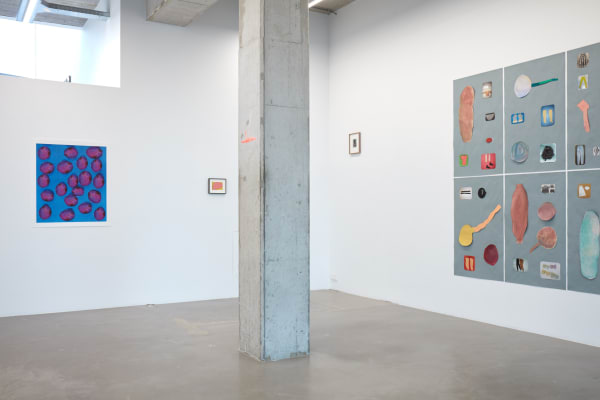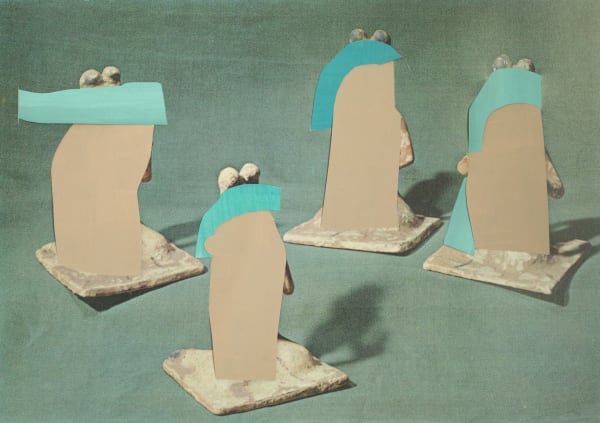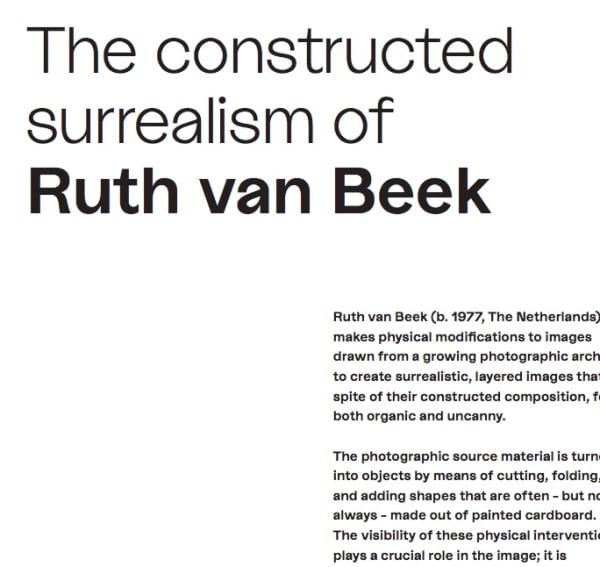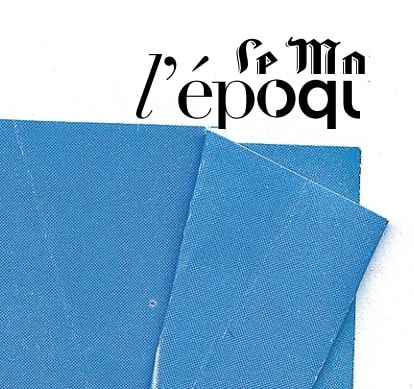Ruth van Beek (b. 1977) uses the established visual codes of photography - a shadow, pedestal, dark backdrop, or gesture - to guide viewers into a belief in the incredible rarity or importance of the shown object, even when that object is unidentifiable. From a growing archive of found photographic material, van Beek arranges images in constantly changing ways.
Her works originate from an ever-growing image archive. The images she collects serve as her tools, source material, and context. These images are gathered and stored in boxes and folders, awaiting transformation. Cut out and removed from their original context, they create space for new meanings. This ongoing process of meticulously selecting, cutting, and organizing coincides with the daily rituals of household life. It has become an integral part of her existence, providing the right conditions and frameworks within which she can freely play. The archive acts as a filter between the outside world and the “inside world.” Everything has been photographed and eventually ends up in a book or online. Archaeological treasures and antique vases meet images of lawnmowers and cakes. Instructional pictures from housewives' booklets and surgical manuals wait together in the same folder. For Ruth van Beek, photography acts as an equalizer, where everything becomes the same material. Scale disappears, and distortion and confusion arise. The images from her archive are in constant dialogue with each other. Image repetition, image rhyme, coincidental similarities, and free associations form the alphabet of a mysterious language. They set each other in motion, influence one another, and enter into new relationships. From this dynamic matter, she creates her work.
She makes collages by combining various image elements in a visible construction. Ruth physically intervenes in the photos by folding, cutting, or adding painted areas of color. The artist rearranges and manipulates the image until she reveals a universe that was already contained within the photo. The construction itself always plays a significant role in the meaning of the work. It’s a literal way of animating something, making it alive, and fixing it again in a new form. Simple techniques like folding, slicing, and cutting keep the work organized, with her actions always visible. By "dressing up" photos, making them blush, or adding small bulges, she creates a seductive illusion. The figure, visibly a paper construction—both object and image of an object—appeals to us as something alive, an animated form that evokes emotions such as endearment, disgust, and wonder.
Books and publications are an essential part of Ruth van Beek's work. They are a platform through which her works come to life, travel, and are seen. Her books are emphatically utensils. In contrast to the fragility and uniqueness of the collages, the book stands as a reproducible, affordable, and usable object. She never sees a book as the end point; rather, the books serve as a kind of assignment to herself, leading to new work. For example, the book How to do The Flowers is made up of hundreds of separate images from old instruction books. Brought together, they form a manual for new work, telling a story about how she creates. The hands in the images become her hands, and this absurd manual becomes a self-portrait of her as a maker.
Her work has been shown internationally with exhibitions at Post Books (Tokyo); The Ravestijn Gallery (Amsterdam), De Warande (Belgium), Fraenkel Gallery (San Francisco); Foam (Amsterdam), Les rencontres d’Arles and Fotomuseum Antwerp and has been featured in magazines such as De Gids, The NewYorker, Vogue Magazine, Centrefold Magazine, Foam Magazine, IMA Magazine, The British Journal of Photography, The New York Review of Books, The Aperture Photobook Review, Elephant Magazine and The New York Times.
She has published numerous artist books including The Arrangement (RVB Books, 2013) which was shortlisted for the Aperture Photobook of the Year Award in 2014 and How To Do The Flowers ( APE & Dashwood Books, 2018 ) to widespread acclaim. After her book Eldorado that came out in 2020 she continued working on a second book, The Oldest Thing, with designer Willem Van Zoetendaal, which was released early 2023 and was well received.
Ruth is represented by The Ravestijn Gallery in Amsterdam.
-

Fotokino | 'The Oldest Thing'
Ruth van Beek 19 October - 30 November 2024Ruth van Beek (born 1977) lives and works in the Netherlands. She has exhibited internationally, notably at Post Books (Tokyo), The Ravestijn Gallery (Amsterdam) and Fraenkel Gallery (San Francisco). Since...Lees meer -

POST - VAGUE | 'The Oldest Thing'
Ruth van Beek 10 November - 10 December 2023Known for her collage works, Ruth creates her work by reconstructing book and magazine clippings that she routinely collects. The exhibition this time will be centered around her new book,...Lees meer -

'Fruits of Labor'
Ruth van Beek & Mariken Wessels 11 March - 22 April 2023The Ravestijn Gallery is proud to bring together new work by Dutch artists Ruth van Beek and Mariken Wessels. In this exhibition, their two distinct visions are brought into dialogue....Lees meer -

'One of a Kind'
A 10-year anniversary show with unique pieces 3 September - 22 October 2022When, in 2012, Narda van 't Veer and Jasper Bode founded The Ravestijn Gallery, they were amongst the few galleries in the Netherlands who felt photography was more than simply...Lees meer -

De Warande & STORMOPKOMST | 'MAKING FUN'
Groupshow with Ruth van Beek 15 May - 14 August 2022De deelnemende kunstenaars vertrekken vanuit een fundamentele speldrift. Ze knippen, plakken, vertimmeren, verdraaien, bouwen op, breken af. Hun werk wil schuren, flirten, knallen, afstoten. Soms dartelend, frivool en lichtvoetig maar...Lees meer -

Taste Contemporary | 'Distorted Duets'
Ruth van Beek 7 - 17 October 2021In this group exhibition we showcases the work of five contemporary photographers alongside sculptural works by Taste Contemporary gallery artists who work in clay and glass. In the industrial setting...Lees meer -

Plaatsmaken | 'Novelties and Specialities'
Ruth van Beek 30 September - 22 October 2021Hoe ging dat? ‘Vanaf het begin heb ik met cornfolie gewerkt. Ik schilderde daarop en dat kan ik dan één op één afdrukken. Daardoor ziet het eruit alsof het met...Lees meer -

Summershow 2021: 'The Constructed Image'
Ruth van Beek, Jasper de Beijer, Katrien de Blauwer, Blommers & Schumm, Cortis & Sonderegger, Koen Hauser, Jaime Hayon, Inez & Vinoodh, Nico Krijno, Michel Lamoller, Simon Lehner, Jean-Francois Lepage, Matt Lipps, Sohei Nishino, Martina Sauter, Scheltens 17 July - 5 September 2021The Ravestijn Gallery is delighted to announce The Constructed Image , a group exhibition that brings together nineteen ( inter)national and experimental artists who showcase photography’s ability to not only...Lees meer -

'The Nursery'
Ruth van Beek 21 November 2020 - 16 January 2021The Ravestijn Gallery is proud to announce The Nursery, a solo show by Ruth van Beek. The exhibition will comprise of new collages and manuals that have their beginnings in van Beek’s growing archive of dolls and their making.Lees meer -

Summershow 2020: 'The Salon Show'
in collaboration with Ingeborg Ravestijn Antiques and The Wunderkammer 13 June - 22 August 2020The Ravestijn Gallery is pleased to announce The Salon Show, created in collaboration with Ingeborg Ravestijn Antiques and The Wunderkammer. The exhibition will show over 80 works from (all) represented...Lees meer -

'The Situation Room'
Ruth van Beek 17 December 2016 - 4 February 2017Ruth van Beek’s work originates in her ever-growing archive. The images, mainly from old photo books, are her tools, source material and context. Van Beek physically intervenes within the pictures....Lees meer -

Summershow 2016
Group presentation RUTH VAN BEEK / JEAN-FRANCOIS LEPAGE / EVA STENRAM / KATRIEN DE BLAUWER / MICHAEL ETZENSPERGER 3 June - 3 September 2016Ruth van Beek (1977) works with a growing archive of found photographic material, images are arranged in constantly changing ways. From these odd combinations and decontextualized images she makes her...Lees meer -

'New Arrangements'
Ruth van Beek 8 November - 20 December 2014Collage is central to van Beek’s work, transforming her appropriated photographic images into a newly tactile object, both concrete and illusory. The works form a tension between what the viewer...Lees meer
-
 Bowl (Figure 146), 2023
Bowl (Figure 146), 2023 -
 Doily (Figure 138, enlarged), 2023
Doily (Figure 138, enlarged), 2023 -
 Table with bowls, plates and cuts (1), 2023
Table with bowls, plates and cuts (1), 2023 -
 Table with bowls, plates and cuts (4), 2023
Table with bowls, plates and cuts (4), 2023 -
 Table with bowls, plates and cuts (6), 2023
Table with bowls, plates and cuts (6), 2023 -
 Blue (Figure 112), 2022
Blue (Figure 112), 2022 -
 Doily (Figure 135), 2022
Doily (Figure 135), 2022 -
 Frame (Figure 72), 2021
Frame (Figure 72), 2021 -
 The Spell, 2021
The Spell, 2021 -
 Everbearing Varieties, 2020
Everbearing Varieties, 2020 -
 Untitled (Figure 60), 2020
Untitled (Figure 60), 2020 -
 Untitled (Figure 61), 2020
Untitled (Figure 61), 2020 -
 Untitled (Figure 66), 2020
Untitled (Figure 66), 2020 -
 Untitled (figure 59), 2020
Untitled (figure 59), 2020 -
 The Levitators, 2013
The Levitators, 2013 -
 Untitled (Figure 17), 2018
Untitled (Figure 17), 2018
-
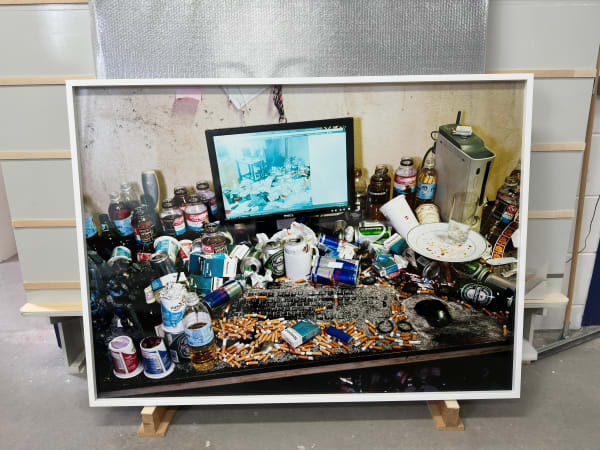
NAP+ 2024
Group presentation with Koen Hauser, Thomas Kuijpers and Ruth van Beek 12 - 15 September 2024We're happy to participate in the inaugural edition of NAP+ , taking place from September 12 to 15, 2024, at Donauweg 11 in Amsterdam. During...Lees meer -
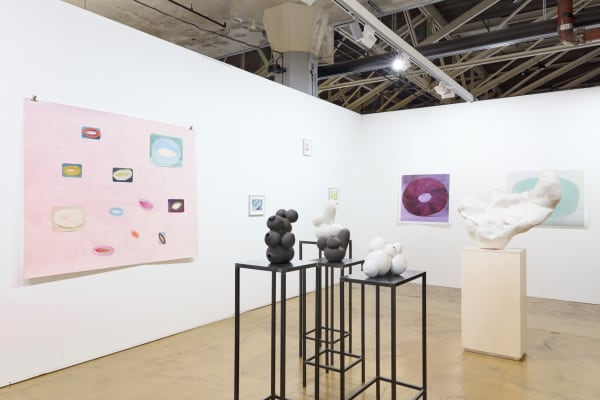
Art Rotterdam 2023
Ruth van Beek, Mariken Wessels 9 - 12 February 2023“Everything in the world began with a yes. One molecule said yes to another molecule and life was born.” - Clarice Lispector, The Hour of...Lees meer -
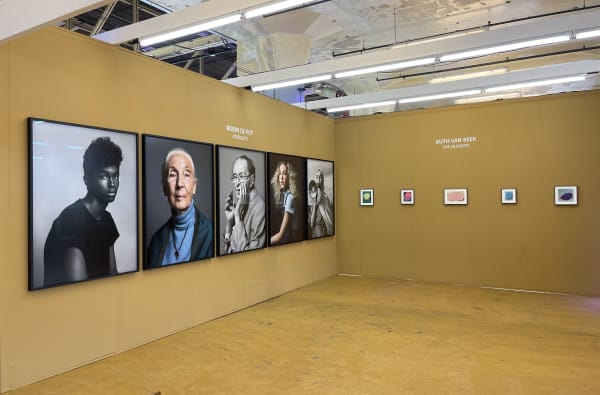
Art Rotterdam 2021
Group presentation Robin de Puy / Ruth van Beek / Nico Krijno 1 - 4 July 2021Van Nelle Fabriek, Rotterdam (NL) Fair: July 1-4, 2021 Art Rotterdam 2021 was initially scheduled to take place in February which was postponed as so...Lees meer -
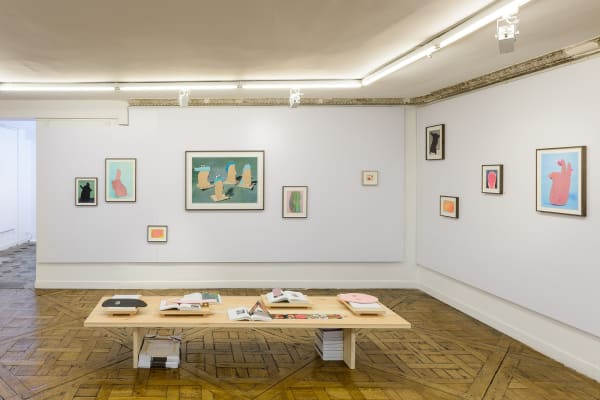
Approche 2018
Solo presentation Ruth van Beek 9 - 11 November 2018Ruth van Beek ( Zaandam, 1977 ) Lives and works in Koog aan de Zaan, The Netherlands. She studied photography at The Gerrit Rietveld Academy...Lees meer -
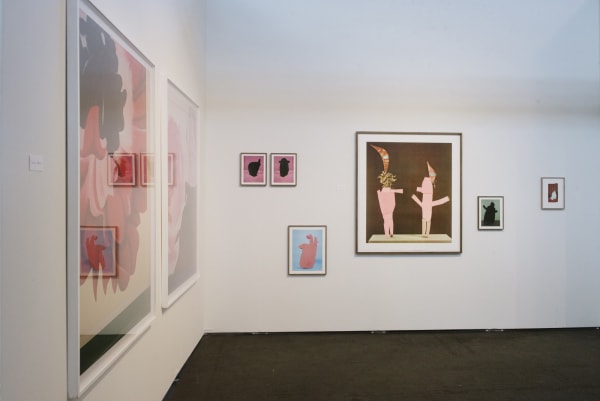
Photofairs 2018
Group presentation Scheltens & Abbenes / Ruth van Beek / Eva Stenram / Mona Kuhn / Darren Harvey-Regan 23 - 25 February 2018PHOTOFAIRS are dedicated to presenting fine art photography and moving image from leading international galleries and their artists in dynamic and cutting-edge destinations around the...Lees meer -
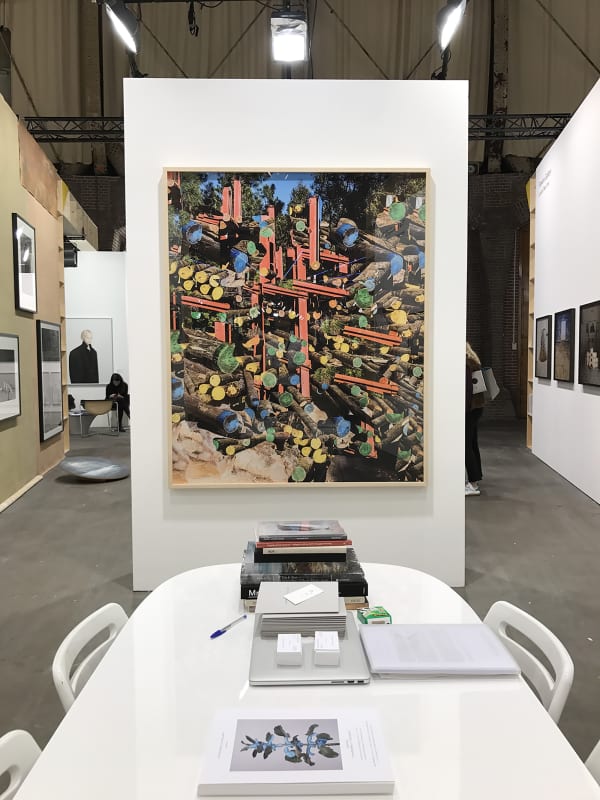
UNSEEN 2017
Duo presentation Ruth van Beek / Nico Krijno 22 - 24 September 2017The Ravestijn Gallery presented all new works from two of its artists at UNSEEN Amsterdam: Ruth van Beek and Nico Krijno. Both artists’ preoccupations lie...Lees meer -
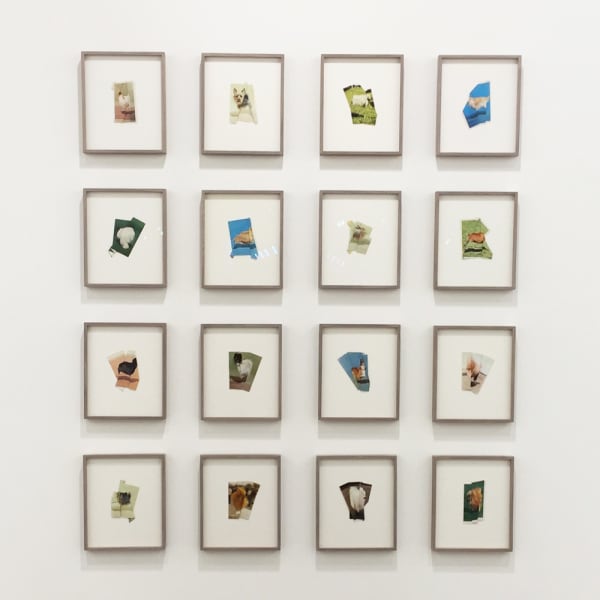
Unseen 2015
Group presentation DarrenHarvey-Regan / Ruth van Beek / Nico Krijno 18 - 20 September 2015Unseen, the international photography fair and festival focused on new photography, will take place from the 18th to the 20th of September 2015 at Amsterdam’s...Lees meer -
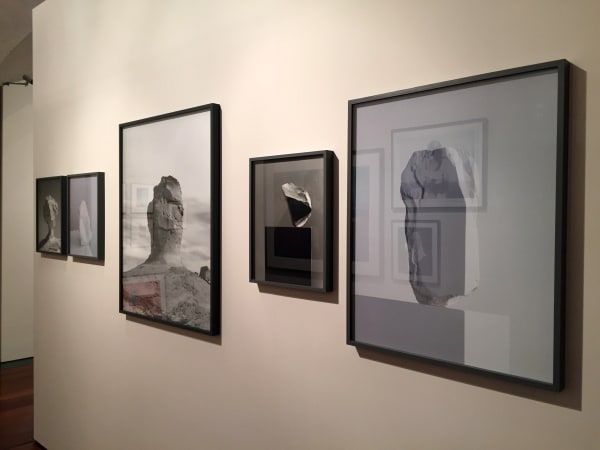
Photo London 2015
Group presentation Ruth van Beek / Eva Stenram / Darren Harvey-Regan / Jean-Francois Lepage 21 - 24 May 2015Photo London was a major international photography event that took place at Somerset House, in the heart of London, from 21-24 May 2015. Please check...Lees meer
-
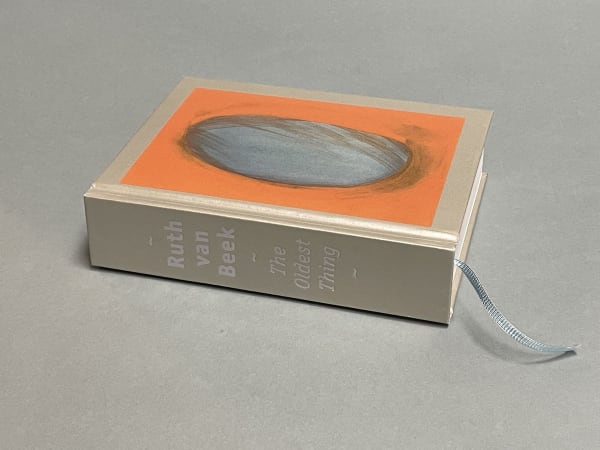
'The Oldest Thing'
by Ruth van Beek SOLD OUT, 2023Hardcover, 512 pagesLees meer
Publisher: van Zoetendaal Publishers
Dimensions: 16 x 12 cm -
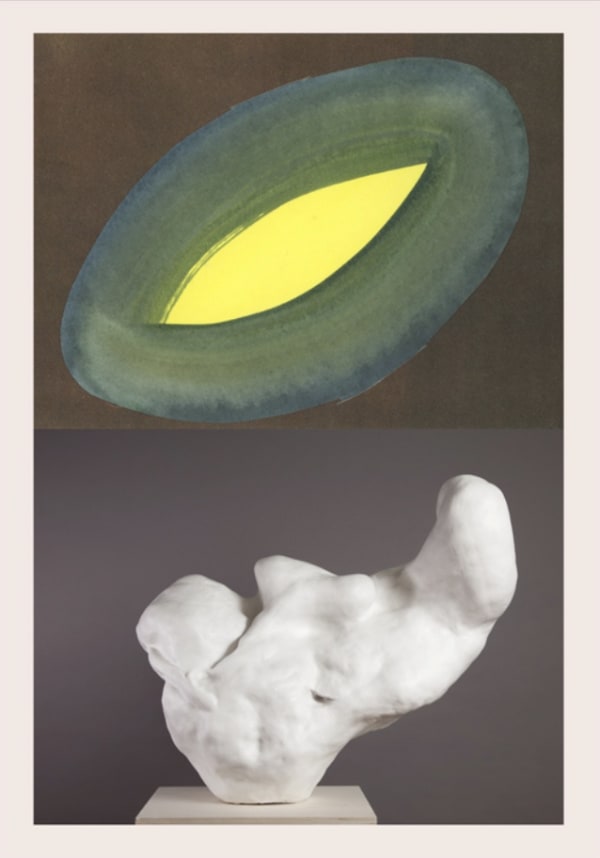
'Fruits of Labor'
by Ruth van Beek & Mariken Wessels Lees meer -
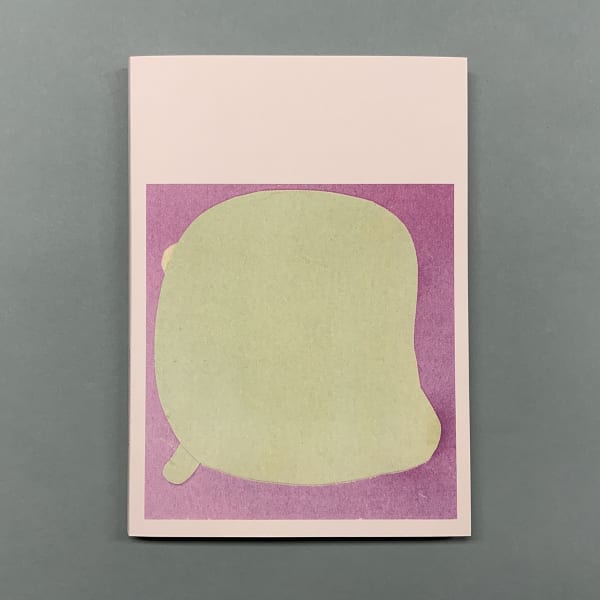
'Eldorado'
by Ruth van Beek SOLD OUTSoftcover, 80 pagesLees meer
Publisher: Van Zoetendaal Publishers
Dimensions: 23 x 16,5 cm -

'How To Do The Flowers'
by Ruth van Beek SOLD OUTSoftcover, 484 pagesLees meer
Publisher: Art Paper Editions
Dimensions: 15 x 21 cm -

'The Cast'
by Ruth van Beek SOLD OUTSoftcover, 40 pagesLees meer
Publisher: New Documents
Dimensions: 30 x 22 cm -
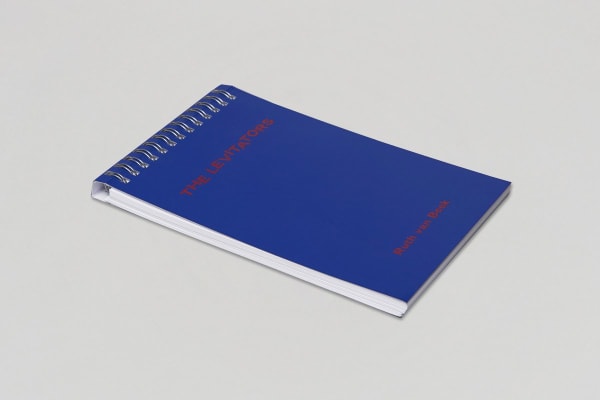
'The Levitators'
by Ruth van Beek Softcover / First editionSoftcover, 74 pages / 37 collages pagesLees meer
Publisher: RVB Books
Dimensions: 19 x 12 cm
-

Studio Visit
In an antique farmhouse in the Netherlands, Ruth van Beek assembles new worlds from a vast archive of collected imagery.Roxy Merrell, Aperture, December 22, 2024 -

NAP+ is een frisse kunstbeurs met een optimistisch DHZ-sfeertje
Edo Dijksterhuis, Het Parool, September 13, 2024 -

Interview with Ruth van Beek
Vague What's On, February 17, 2024 -

Objects of Love
Marie Auger, Tide Magazine, February 2, 2024 -

Donkere kamer – Een aanraking
Jan Postma , De Groene Amsterdammer, September 20, 2023 -

Fruits of Labor: Een dubbelinterview met Mariken Wessels en Ruth van Beek
Wouter van den Eijkel , GalleryViewer Magazine, March 9, 2023 -

Five remarkable works at Art Rotterdam
Flor Linckens, GalleryViewer, February 3, 2023 -

Een clou, een kwinkslag, een plottwist: de tentoonstelling Making Fun laat je hardop lachen
Anna van Leeuwen, de Volkskrant, July 7, 2022 -

Existence of a mirror that takes out the face
Kanae Hasegawa, D.W.M., July 4, 2022 -

(Re)constructing reality and (Re)imagining photography
Simona Marani, Fotografare, August 21, 2021 -

EXHIBITION REVIEW: THE CONSTRUCTED IMAGE
Emika Suzuki , Musée Magazine, August 10, 2021 -

MODES OF FABRICATION
Rachel Segal Hamilton, Aesthetica Magazine, August 2, 2021 -

EEN BEVALLIG BEEN LIGT LOS OP DE BANK, ALS EEN VONDST UIT EEN CRIME SCENE
Edo Dijksterhuis, Het Parool, July 30, 2021 -

Exhibition review: Art Rotterdam
Jan Alex, Musee Magazine, July 1, 2021 -

Met schaar en Photoshop
Rianne van Dijck, NRC / Het Blad, July 1, 2021 -

Vogue
Sanne van Rij, Vogue, May 1, 2021 -

Nearest Truth: Ruth van Beek art exhibition Amsterdam
Brad Feuerhelm, Nearest Truth Podcast, February 16, 2021 -

Amsterdam FM
Robert van Altena, Springvossen Podcast, January 11, 2021 -

Ruth van Beek in photo art gallery The Ravestijn Gallery
Magali Avezou, YET Magazine, November 21, 2020 -

Galleryviewer: Ruth van Beek in The Ravestijn Gallery
Flor Linckens, Gallery Viewer Magazine, November 19, 2020 -

Ruth Van Beek's latest book approaches her archive both abstractly and practically
Lucy Bourton, It's Nice That, November 30, 2018 -

How to Do The Flowers Book Review
Conscientious Photography Magazine, November 26, 2018 -

Le Figaro Exhibition Recommendation of A PPR OC HE
Valérie Duponchelle, Le Figaro, November 11, 2018 -

Nederlandse fotografie is overal tijdens Paris Photo
Merel Bem, De Volkskrant, November 8, 2018 -

Ruth Van Beek: The Arrangist
Brad Feuerhelm, ASX, October 10, 2018 -

Tique
May 11, 2018 -

Le Monde
March 25, 2018 -

AMC Magazine
February 16, 2018 -

Four & Sons
October 14, 2016




